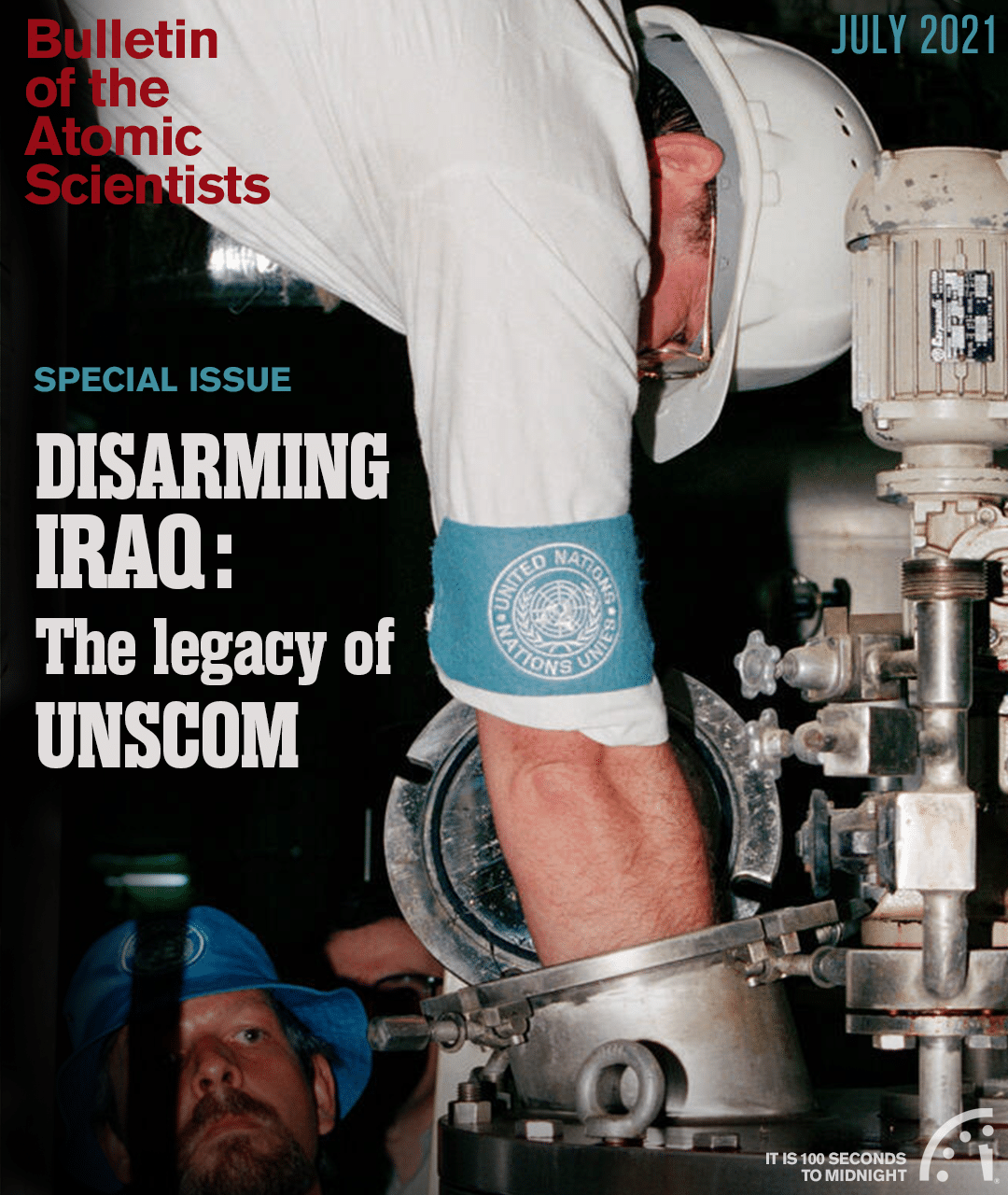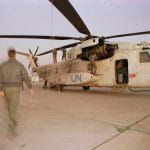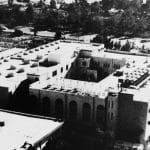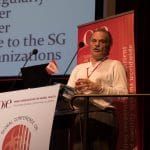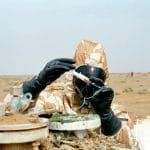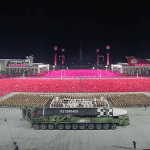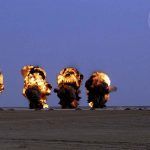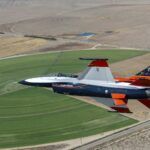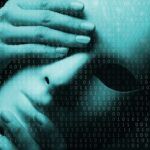Introduction: UNSCOM and the future of WMD verification
By Henrietta Wilson, Filippa Lentzos | July 21, 2021
Introduction: UNSCOM and the future of WMD verification
By Henrietta Wilson, Filippa Lentzos | July 21, 2021
Many people will remember Colin Powell’s historic speech to the UN Security Council describing Iraq’s mobile production facilities for making biological weapons. Many will also remember that shortly after this, in March 2003, George W. Bush and Tony Blair went to war against Iraq on the basis of these “biological weapons factories on wheels and on rails”[1] and Iraq’s illicit nuclear and chemical weapons—only to later find that these claims were incorrect, that the intelligence had been misrepresented,[2] and that, in fact, Iraq did not have any weapons of mass destruction (WMD). This revelation—that there were no WMD despite intelligence findings to the contrary—has come to dominate collective consciousness. Yet, it overlooks the long and complicated history of Iraq’s acquisition and use of outlawed weapons and overshadows the work of international inspectors who successfully uncovered and destroyed these weapons in the decade leading up to 2003.
This special issue highlights this history, commemorating the 30th anniversary of the United Nations Special Commission on Iraq (UNSCOM), the organization set up after the 1991 Gulf War to oversee the elimination of Iraq’s chemical and biological weapons and the long-range missiles that could disperse them. It focuses on UNSCOM’s work to uncover Iraq’s large, hidden biological warfare preparations and includes articles and interviews from people serving the range of UNSCOM roles—including its executive chair, deputy chair, commissioners, chief inspectors, spokesperson and official historian. Together, the collection captures memories, insights and lessons from some of the key people involved in this unique disarmament undertaking. It does not aim to be a comprehensive account; rather it captures important viewpoints that add to the existing literature and analysis.[3]
UNSCOM’s experiences in uncovering an illicit, covert biological weapons program remain relevant to today’s policy makers, not least as they provide clarifications about the possibilities of, and challenges to, developing international measures to prevent biological weapons. Biological warfare—the weaponization of disease—is the subject of several international treaties, most significantly the 1972 Biological Weapons Convention (BWC), which bans the development, production, stockpiling and acquisition of biological weapons.
Since its inception, the BWC has been criticized for its lack of implementation measures, and debate has particularly focused on possibilities to establish systems for states parties to verify treaty compliance.[4] On the one hand, it is recognized that verifying the convention poses distinct challenges, because the components needed for a biological weapons program have many legitimate uses and could be hidden in a range of civilian and commercial enterprises. On the other hand, many people have concluded that despite these challenges, it is possible to develop systems that could provide sufficient confidence in treaty compliance.
This issue has divided the BWC states parties; some (notably the United States) are convinced that it is impossible to verify the convention’s provisions, while others (including most European countries) feel that stronger compliance checks are both feasible and desirable. The difference in views has politicized the language, to the extent that the word “verification” has become associated with excessively intrusive systems, which are costly to run and raise concerns about the danger of espionage to legitimate defense and commercial enterprises. BWC “verification” is now rarely talked about by Western Group states; instead, they speak of “compliance assessment” and “measures to promote compliance.”
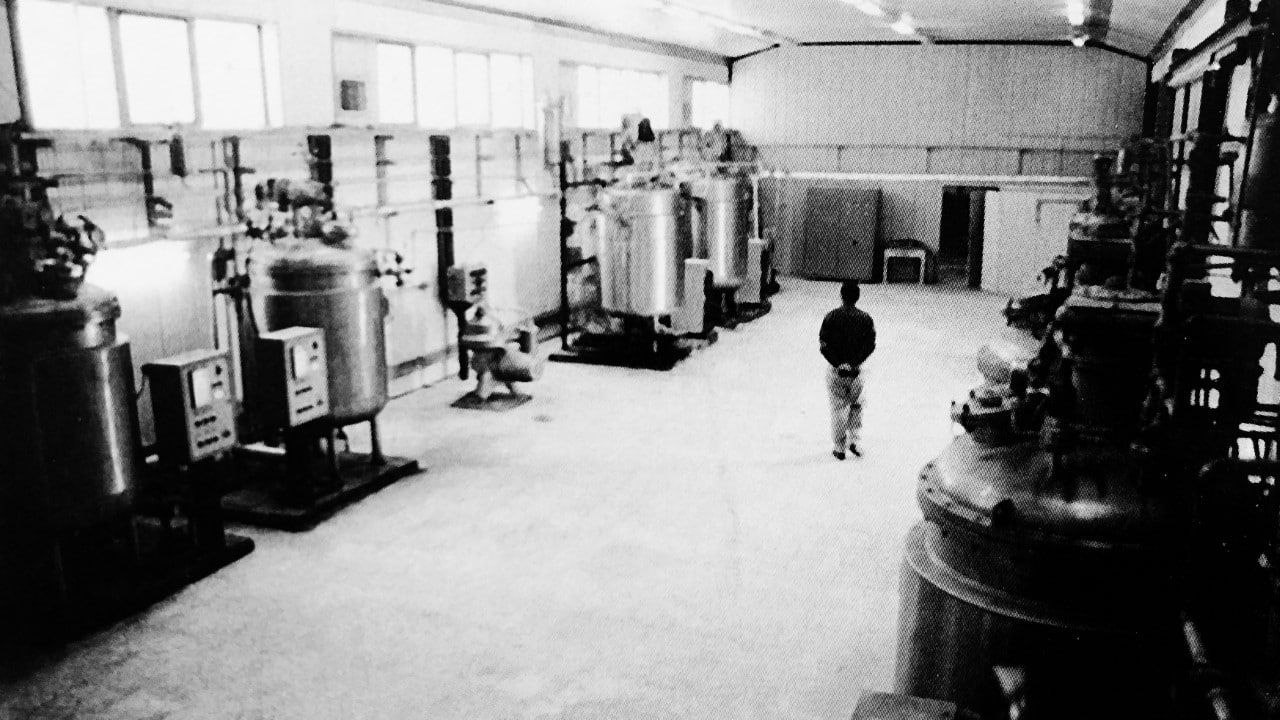
UNSCOM provides important lessons to inform this debate and the wider efforts to maintain the strength of the regime against biological weapons. As detailed by articles in this issue, different people have different takeaways from the UNSCOM experience. Nikita Smidovich points out that the UNSCOM inspectors fulfilled a verification function that had previously been doubted by managing to discover a well-hidden biological weapons program despite serious obstacles from a determined proliferator. There are also suggestions, by Stephen Black for instance,[5] that UNSCOM triggered renewed global efforts to strengthen the BWC, as it demonstrated that even in the most antagonistic circumstances international inspections can reveal an illicit biological weapons program. Åke Sellström presents a different account: that UNSCOM’s work further entrenched a belief that effective BWC verification requires monitoring an unfeasibly large array of facilities, with an impractical degree of access, and this reinforced understanding ultimately led to the breakdown of negotiations to develop a legally binding instrument to strengthen the BWC in 2001.
These views reflect different strategic assumptions about international treaties and verification—including understandings about what verification includes and how it should be conducted. During and immediately after the Cold War, it was commonly assumed that good arms control treaties should include extensive verification, understood to involve systems precisely prescribing what information was needed, how it should be collected, checked, and processed, and how to deal with questions of non-compliance.
In the 30 years since UNSCOM, BWC states parties have moved on from this rigid monolithic approach. Instead, many now favor a more flexible system, incorporating voluntary measures through which they can demonstrate their own compliance, thereby building a picture of the overall health and robustness of the treaty.[6] On top of these changing views, verification techniques have also developed. Digital technologies have transformed global monitoring opportunities. It is now possible for many people to find and analyze information from a range of sources—including satellites and social media—and this greatly enhances the visibility of activities and artifacts around the globe.[7] Online open-source investigators use these opportunities to monitor a huge range of actions, including proliferation, financial corruption, and human rights abuses. But while this new capacity suggests possibilities for international verification, it also faces some of the fundamental challenges encountered by UNSCOM, including how to authenticate its findings, and what should happen once a serious violation has been identified.
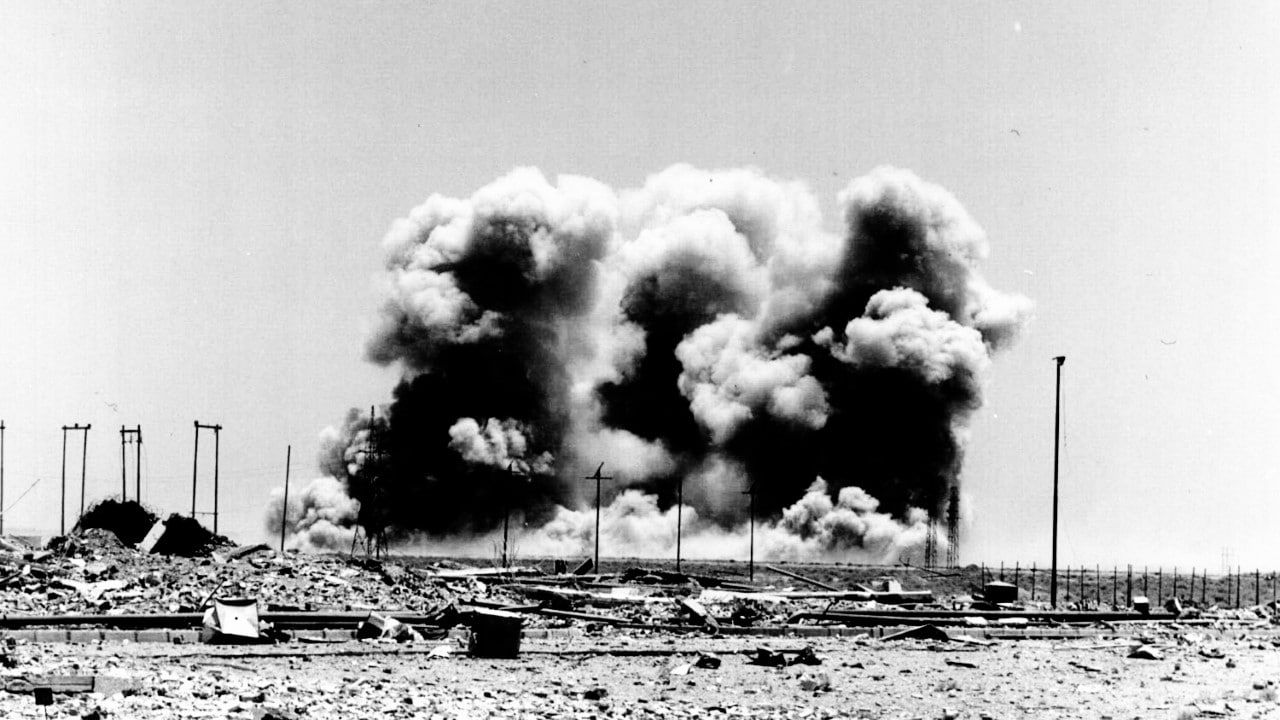
UNSCOM remains relevant to contemporary efforts to minimize the risks of biological weapons. It faced enormous challenges in fulfilling its mandate—in the form of an Iraq determined to obstruct the international inspections—but its efforts nevertheless showed that internationally verified elimination of weapons of mass destruction is technically possible.
The contributions to this special issue provide useful reflections about UNSCOM’s successes and how it achieved them. The papers are framed by a primer by Black and co-authors that overviews the historical contexts UNSCOM was working within, in terms of Iraq’s pre-1991 violations of international norms, the disarmament and non-proliferation understandings and practices that informed UNSCOM’s work, and the ways that UNSCOM developed its own approaches—innovating and refining verification tools and techniques to achieve its mandate. Complementing this analysis, many of the issue’s contributions provide personal accounts of what it was like to work for UNSCOM and the aspects of their individual histories that led them to work there (including the contributions from Dave Franz, Gabriele Kraatz-Wadsack, Sellström, and Terry Taylor).
Several articles also reflect on UNSCOM’s legacy. Charles Duelfer, Franz, and Sellström, for instance, demonstrate that UNSCOM produced a set of highly skilled international inspectors who went on to contribute to later disarmament and non-proliferation exercises, including the Iraq Survey Group, the Nunn-Lugar Cooperative Threat Reduction Program, the Organization for the Prohibition of Chemical Weapons, the UN Secretary-General’s Mechanism for Investigation of Alleged Use of Chemical and Biological Weapons, and international inspections on chemical weapons use in Syria. Duelfer also notes that the UNSCOM experience helped to design later international inspection efforts, including those in Syria and Iran. A companion essay by Ioan Tudor, of the UN Office of Disarmament Affairs, emphasizes the importance of several of these to current world security and stability.
Beyond overviews of UNSCOM’s history and legacy, several themes run through the special issue. One prominent theme relates to people. Often verification activities are characterized as technical processes—systematic steps which, if followed closely, can lead to unambiguous outcomes. UNSCOM makes clear that there is also a social aspect to verification. Contributions from Kraatz-Wadsack, Taylor, and Tim Trevan, highlight that good inspections require a certain type of person: talented, meticulous, and inventive in looking for and finding solutions to sustained obstacles and challenges, while also prepared to collaborate and work within multidisciplinary teams. Smidovich notes the importance of training in cultivating specialized inspectors, and calls for an international WMD inspector training program. Many contributors write that UNSCOM’s leadership was essential to its achievements, and in particular, name executive chair Ambassador Rolf Ekéus with gratitude, and as integral to UNSCOM’s successes.
This issue also flags the many ways in which human connections and rapport facilitated UNSCOM’s verification efforts. Franz writes that groups were able to build links across big cultural and ideological differences by speaking the same language. For example, a shared background in science facilitated connections between UNSCOM inspectors and Iraqi scientists, while UNSCOM translators and Iraqi minders developed friendships through their shared understanding of Arabic. Duelfer adds to this, pointing out that UNSCOM inspectors were able to unearth and interpret information through their inter-personal interactions. It is also clear that many UNSCOM inspectors already knew each other from contributing to previous efforts, including negotiations on the Chemical Weapons Convention, sometimes serving on opposing sides, but nevertheless building mutual respect.
In addition, the special issue explains why UNSCOM’s organizational structure was important in enabling these necessary individual attributes to emerge. Trevan points out that Ekéus channelled current management wisdom ahead of its time, as he set up a “flat,” non-hierarchical organizational structure, providing flexibility and autonomy to his staff, which enabled the creativity and innovation needed to solve the iterative obstacles Iraq threw up. Ekéus himself outlines how unique UNSCOM was, not least in being the first subsidiary body of the UN Security Council, and describes how he went about setting up this unprecedented organization.
A second theme relates to the verification tools that UNSCOM used and developed, and how these contributed to its successes. UNSCOM’s ability to use overlapping verification techniques, and work across its different program areas, was fundamental to its discoveries. It also pioneered a range of novel verification approaches, as detailed in the contributions from Franz, Kraatz-Wadsack, Smidovich, Taylor, and Trevan. Underlying this detail, Smidovich recounts ways in which UNSCOM provides a set of insights about the fundamentals of verification design and objectives.
The development of multiple overlapping techniques was partly a response to Iraq’s evasions and obfuscations. Black and his co-authors show that the need to go through successive rounds of checking declarations encouraged UNSCOM to be creative in how it found and processed information from multiple sources. The terms of the 1991 Gulf War ceasefire agreement obliged Iraq to provide declarations of all its WMD and designated missile holdings. The weapons that were in existence were to be turned over to UNSCOM for destruction, either under UNSCOM supervision or by UNSCOM itself, and then UNSCOM would undertake on-site inspections to verify the declarations and destruction activities. It seemed as though it should be fairly straightforward, but the reality was anything but. It quickly became clear that Iraq’s declarations were inaccurate, and there followed iterations of UNSCOM revealing sufficient evidence of errors and anomalies to pressure Iraq into reluctantly admitting to more activities than it had previously declared. Ekéus, Sellström and Taylor detail the serious and ongoing impediments Iraq imposed on the inspection regimes.
A final theme concerns questions about ‘how much verification is enough?’ Ekéus notes that by the time he left UNSCOM in 1997, it was clear that Iraq’s substantial WMD holdings had been found and destroyed. However, the evidence was not sufficient to convince all the members of the Security Council. Duelfer and Sellström explore the difficulties of arriving at a decisive conclusion that no “militarily significant” quantities remained. After the 2003 Iraq War, the Iraq Survey Group confirmed that Iraq had no remaining WMD and validated UNSCOM’s findings, but as Duelfer puts it, at the time, “UNSCOM did not know how good it was.” Ekéus reflects on how the international community’s failure to recognize this contributed to the disasters of the 2003 War. There are lessons here for future efforts to assess BWC compliance; among the most significant is the notion that bars should be set to a level that builds sufficient confidence that compliance is achieved, but not so high that they are unobtainable.
This special issue shines a light on UNSCOM’s successes and, in doing so, provides many pertinent lessons for current and future efforts to prevent the development and acquisition of biological weapons. We are extremely grateful to our contributors and also aware that many of the people who made UNSCOM’s achievements possible are no longer with us. We remember these chief inspectors in particular: Volker Beck, Achim Biermann, David Kelly, Annick Paul-Henriot, Johan Santesson, Richard (Dick) Spertzel, along with all others who contributed so much to UNSCOM’s achievements. This issue is dedicated to their memory, and to the work of today and tomorrow that aims to minimize the dangers of biological warfare.
Together, we make the world safer.
The Bulletin elevates expert voices above the noise. But as an independent nonprofit organization, our operations depend on the support of readers like you. Help us continue to deliver quality journalism that holds leaders accountable. Your support of our work at any level is important. In return, we promise our coverage will be understandable, influential, vigilant, solution-oriented, and fair-minded. Together we can make a difference.


